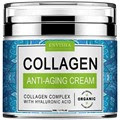If you have oily skin, exfoliating can help remove excess oil, unclog pores, and promote a smoother complexion. However, it's important not to overdo it, as excessive exfoliation can lead to skin irritation and dryness. For oily skin, it's generally recommended to exfoliate no more than two to three times per week. This frequency allows for sufficient exfoliation without stripping the skin of its natural oils.
******************************
and get a portion of your money
**********************************
Keep in mind that everyone's skin is unique, so you may need to adjust the frequency based on how your skin responds. If you notice any signs of irritation, redness, or excessive dryness, it's best to reduce the frequency of exfoliation or try a gentler exfoliating product.
Additionally, be mindful of the type of exfoliator you use. Chemical exfoliants containing ingredients like alpha hydroxy acids (AHAs) or beta hydroxy acids (BHAs) are often preferred for oily skin. These ingredients can effectively dissolve dead skin cells and unclog pores. Physical exfoliants, such as scrubs with granules, can be used but should be gentle to avoid causing micro-tears in the skin.
Always follow the instructions provided with the exfoliating product and listen to your skin's needs. If you're uncertain about the appropriate exfoliation frequency for your skin type, it's advisable to consult a dermatologist for personalized recommendations
What are some signs that indicate I should reduce the frequency of exfoliation
Exfoliation can be beneficial for the skin, but it's important to be mindful of how your skin reacts to the process. Here are some signs that indicate you may need to reduce the frequency of exfoliation:
Increased sensitivity: If your skin becomes more sensitive than usual after exfoliation, with symptoms like redness, stinging, or burning, it's a sign that you may be exfoliating too often. Excessive exfoliation can compromise the skin's barrier function and lead to irritation.
Dryness and tightness: If your skin feels excessively dry, tight, or stripped after exfoliation, it suggests that you're overdoing it. Over-exfoliation can disrupt the skin's natural moisture balance and cause dehydration.
Flakiness and peeling: While mild flaking can be a normal part of the exfoliation process, excessive or prolonged peeling indicates that you're exfoliating too frequently. This can result in the removal of healthy skin cells and compromise the skin's protective barrier.
******************************
and get a portion of your money
**********************************
Redness and inflammation: If your skin appears red, inflamed, or shows signs of inflammation like small bumps or pustules after exfoliation, it's a clear indication that you need to dial back on the frequency. Over-exfoliation can irritate the skin and exacerbate conditions like acne or rosacea.
Increased oiliness: Paradoxically, over-exfoliation can stimulate the skin to produce more oil as a protective mechanism. If you notice that your skin becomes excessively oily or experiences more breakouts after exfoliating, it may be a sign that you're stripping away too much oil and disrupting the skin's natural balance.
If you observe any of these signs, it's advisable to reduce the frequency of exfoliation or switch to a gentler exfoliating product. Give your skin time to recover and restore its natural balance before resuming exfoliation. It's always a good idea to listen to your skin and adjust your skincare routine accordingly.



No comments:
Post a Comment